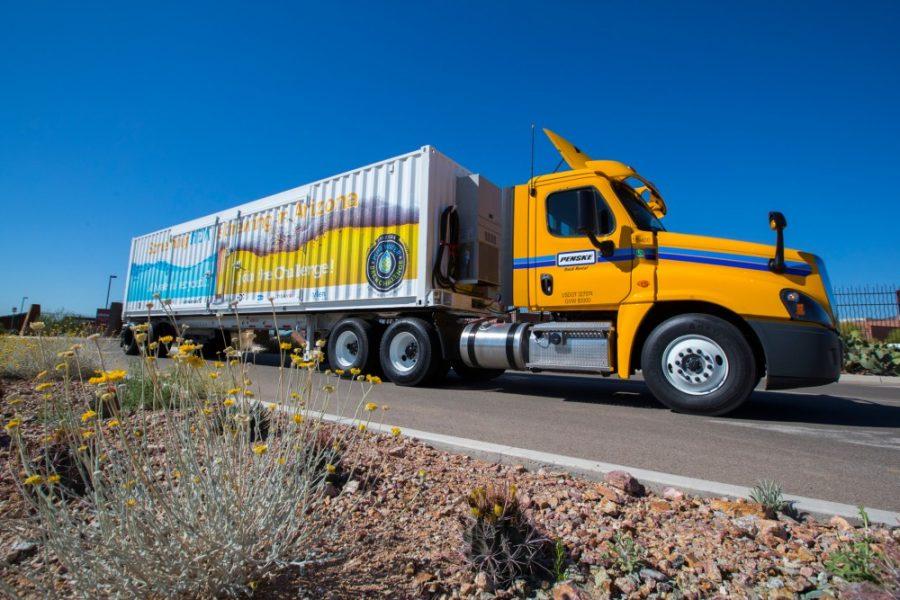University of Arizona associate professor Channah Rock, along with three of her colleagues, designed a water purification truck as a part of the AZ Pure Water Brew challenge. The challenge invites breweries across Arizona to brew beers using purified waste water.
The truck acts as a proof of concept for the safety of drinking purified waste water, and has been traveling across Arizona, offering samples to locals to prove its efficiency and taste.
“I currently serve as the president of the local national water re-use association,” Rock said. “My part is representing water re-use across the state.”
The challenge was launched by multiple requests sent out to Arizona brewers to participate in the mission.
“We produced our purified water in Tucson, Flagstaff and Phoenix and distributed out to our 26 brewers,” Rock said.
The brewers, who receive upwards to a thousand gallons of purified water, are required by the challenge to use the purified water in the brewing process and then circulate the alcohol to nearby drinkers, showing the purity of the water.
Rock said the challenge works because waste water purification, while an important topic, is not a very common one for most people. Alcohol, however, is more common, and can provide a starting point for conversation.
RELATED: One year after launch, OSIRIS-REx flies by Earth
“So the thought is, if we had a hook with beer and brewing, then people might pay more attention to the topic,” Rock said. “The goal is to use brewing as a means to educate the public and talk about it in a more relaxed setting.”
The water used is, of course, not pure waste water. Instead, the water is advanced treated recycled water. This is water already put through waste water treatment facilities and is fit mostly for irrigation purposes such as fire hydrants and watering crops, according to Rock.
Rock said the water goes through a five-step process, with the first being ultra-filtration.
“Ultra-filtration does a really good job at removing particles such as bacteria and viruses,” Rock said.
The next step is reverse osmosis, which removes salt and other such minerals. It pushes water through filters with holes so small larger molecules can’t pass through.
The third step, UV advanced oxidation, breaks down the traces of unwanted chemicals left in the water from trashed pharmaceuticals and healthcare products.
“It sounds like a big word, but what it is is we hit water with the UV which, combined with peroxide, makes it more effective at breaking down chemical bonds,” Rock said.
After that, Rock said, the water is pushed through granular activated carbon filters, similar to standard home filters.
“The carbon filters are good at binding or breaking down the organics that we’ve treated up until the point,” Rock said.
The carbon filters also catch and quell the hydrogen peroxide used in the previous step, a common disinfectant not safe for ingestion.
RELATED: Neighbors conflicted over new honors complex
The final step is chlorination, which is necessary to keep the water clean after distributing it through pipes. The water could potentially pick up new bacteria while in the pipes, which could easily multiply and spread disease.
Chlorine, while generally not safe for consumption, is safe in low doses. Most tap water contains residual chlorine, according to Rock.
“This is better than the tap water you’re using today,” Rock said. “It’s cleaner and been through more purification than tap, or bottled, water for that matter.”
As the truck was primarily a proof of concept, Rock said the biggest challenge was essentially fitting a whole facility into a truck.
”We had to scale things down from a full production scale to what we call a pilot demonstration scale,” Rock said.
Rock said she hopes to see this new system be adopted by purification plants across the nation so consumers can be educated on purified waste water’s safety and efficiency.
“The whole goal of the project was to take it on the road so local communities can see what the process is,” Rock said. “If people can touch, see and taste something, they’re much more willing to be accepting of that.”
Follow William Rockwell on Twitter










